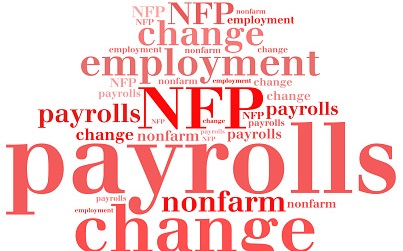The latest US labour market report for the month of December will be seen by Fed policymakers, and seems to have been interpreted by financial markets, as endorsing the central bank’s policy tightening plans for 2022 that were laid out at the December Fed meeting and in the minutes from the meeting released this week. To recap, the US economy added just 199K jobs in the month of December versus median economist forecasts for a gain of 400K. That marked a slight deceleration from the 249K jobs added the month prior. But the problem isn’t a lack of demand for workers due to a weak economy. As the Fed is well aware, the main factor holding back the pace of MoM job growth from returning to its last June/July levels of near 1M per month is a lack of labour supply.
This much is evident from the fact that the participation rate remains subdued under 62.0% having been at 63.4% prior to the onset of the pandemic – Fed officials have said that the ongoing presence of the pandemic is holding people back from re-joining the labour force. Businesses have been complaining for months (as evident in various business surveys) that skills and personnel shortages are restraining their ability to do business. As made evident in recent JOLTs surveys (the most recent one released on Tuesday was for November), there is massive demand for workers. JOLTs job openings were at 10.5M in November, more than 1.5 jobs per unemployed person. The quit rate also hit a record high above 4M, as workers take the opportunity of the labour shortage to quit their job in the hope of securing better pay/conditions.
Digging back into the latest jobs report, the rest of its contents strongly support the notion of a labour market that is very tight as a result of a lack of worker supply. The unemployment rate in December fell to 3.9% from 4.2% in November, a bigger drop than the expected decline to 4.1%. Wage inflation was also stronger than expected on both a MoM and YoY basis (though still below inflation), as workers exert their newfound power to bid up wages. According to the minutes of the December Fed meeting, FOMC participants unanimously view the labour market as very tight right now, with some suggesting that “short-term” full employment has already been reached, and others suggesting that even if it hasn’t been reached just yet, it would be OK to start raising rates soon. FOMC participants seemed unanimously on board with the idea that as long as the labour market continues to make progress (which the December jobs report showed), rate hikes would soon be appropriate.
Quick explainer: when Fed members talk about short or near-term full employment, they are talking about full employment for the people who are actually willing to participate in the work force right now, rather than those who may be able to be enticed back once pandemic risks subside. In the past, the Fed defined full employment as pretty much a return to pre-pandemic levels of participation, but it has become increasingly obvious that such as return may take a very long time (perhaps due to massive early retirements), and that the Fed has to consider the work force it actually has right now, rather than the one its wants some time in the future.
The net result of today’s jobs report is that, as expected by most economists and analysts, the Fed’s tightening plans for 2022 remain very much on track. The latest jobs report maintains the narrative of a very tight labour market with full employment, and, amid sky high inflation, the Fed is now seen as odds on to implement a first-rate hike in March, or immediately after its QE taper is done. The recent release minutes suggested strong support for the Fed to start allowing its balance sheet to decline in size shortly after the hiking cycle gets underway. That would initially mean that the Fed stops reinvesting the proceeds of maturing bonds in new bonds, but the Fed could soon start actively selling down its bond holdings. Most analysts suspect this could start as soon as the summer.
As a result, US bond yields have been on the March higher again. The nominal 10-year yield recently rose back to its highest levels since January 2020 at just under 1.80%, surpassing the previous 2021 high at 1.77%. 10-year yields are now up around 27bps on the week. The move higher reflects a growing belief in the Fed’s conviction that rates will eventually return to what it sees as “neutral” for the economy around 2.5% in the long run. Of course, as long as the 10-year remains substantially below 2.5%, that suggests that markets long-run expectation is for Fed policy to lean on the accommodative side. Meanwhile, a near 35bps rally in 10-year TIPS (real) yields to -0.75% from previously close to -1.1% demonstrates a growing conviction that the Fed is going to, on average over the next 10-years, get its federal funds rate closer to (though still substantially below) the average level of inflation. This average level of expected inflation can be derived from the nominal yields minus the real yield, so is just over 2.50% at present.
But there is a risk premium priced into all of this in the form of various “what if” scenarios that could force the Fed to reverse rate hikes and return to zero once more. What if the pandemic returns with vengeance, delaying or reversing rate hikes amid further economic pain? What if the Fed tightens too quickly and slows the economy too much then has to go into reverse?
Financial markets may need to see evidence that the US economy can continue to grow at a healthy pace in 2022 and beyond even in the face of a Fed lifting interest rates and reducing the size of its balance sheet. But if the Fed can manage this throughout 2022 without hiccups, conviction in the Fed’s ability to get rates back to neutral will grow. 10 and 30-year yields moving back to the 2.5% region or above over the course of the year and real yields moving back towards zero could give the US dollar a significant boost if the same bond yield moves are seemed overseas. Meanwhile, growth stocks (like big tech) may struggle, as the era of low rates that has so supported their stock price growth comes to an end.




